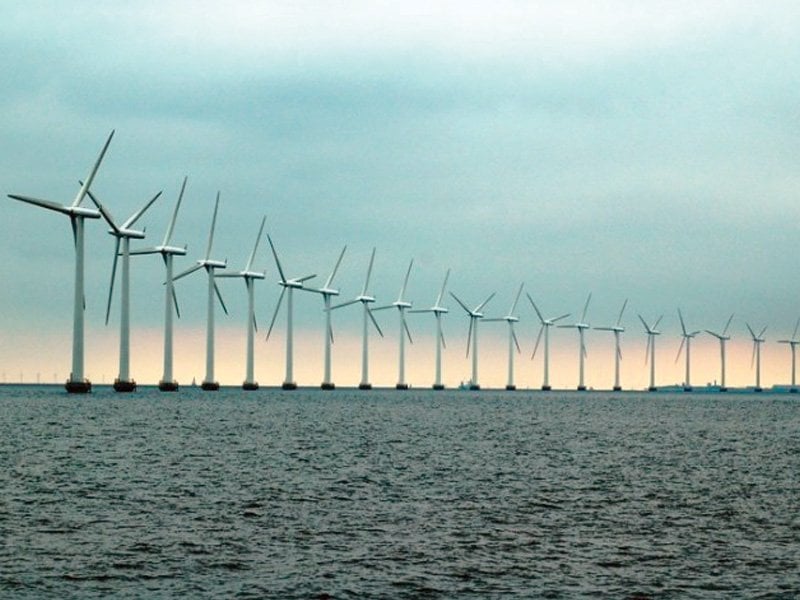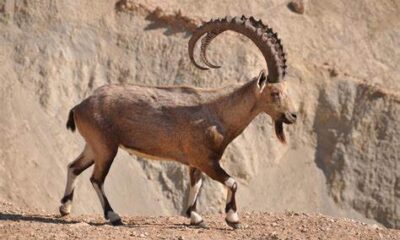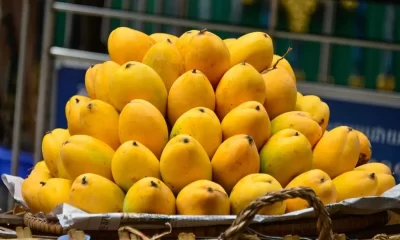Article
Wind Energy Potential in Pakistan: A Comprehensive Overview of Suitable Sites
Published
10 months agoon
By
EDITOR
Wind energy has emerged as a key component of Pakistan’s renewable energy strategy, offering a sustainable and environmentally friendly solution to the country’s energy challenges. With a growing demand for electricity and increasing concerns over environmental sustainability, Pakistan is actively exploring its wind energy potential. The country’s unique geography, especially its coastal regions and vast plains, provides several sites that are suitable for the development of wind energy projects. In this article, we explore the most suitable sites for wind energy generation in Pakistan, the current status of wind power in the country, and the future potential of this renewable resource.
Wind Energy in Pakistan: An Overview
Pakistan has an estimated potential of generating 50,000 MW of electricity from wind energy alone, according to studies conducted by the Alternative Energy Development Board (AEDB) and other energy authorities. The country’s wind energy sector is still in its early stages, but significant progress has been made in recent years, particularly in the Sindh province, where several wind farms have been established and are successfully contributing to the national grid.
Major Suitable Sites for Wind Energy in Pakistan
- Gharo-Keti Bandar Wind Corridor (Sindh)
The Gharo-Keti Bandar Wind Corridor is by far the most significant and well-explored wind energy site in Pakistan. Situated along the coastal areas of Thatta and Jamshoro districts in Sindh, this corridor extends for over 60 kilometers and covers an area of 9,700 square kilometers. It is estimated to have the potential to generate up to 11,000 MW of electricity. The wind speeds in this region range from 5 to 7.5 meters per second (m/s), which are highly favorable for wind energy generation.
Several wind farms have already been established in the Gharo-Keti Bandar corridor, including the Jhimpir Wind Farm, which is one of the first commercial wind energy projects in Pakistan. The corridor has attracted both local and international investments, and its success has spurred further interest in expanding wind energy capacity in the region.
- Jhimpir Wind Corridor (Sindh)
The Jhimpir Wind Corridor, located near the town of Jhimpir in the Thatta District, is another key site for wind energy in Pakistan. This region benefits from consistent wind speeds of 6 to 7 m/s, making it an ideal location for wind farms. The Jhimpir Wind Power Project, which became operational in 2012, was the first major wind energy project in Pakistan and set the stage for future developments.
With the success of the initial projects in Jhimpir, the area has seen the establishment of multiple wind farms, including Zorlu Energy’s wind farm and the Three Gorges First Wind Farm developed by the China Three Gorges Corporation. The region continues to expand its wind energy capacity, contributing significantly to the national grid.
- Kalar Kahar Wind Corridor (Punjab)
The Kalar Kahar region in Punjab is another promising site for wind energy development. Situated in the Chakwal District, this area has been identified as having strong wind potential, particularly in the valleys and mountainous regions. Wind speeds in this area typically range from 5.5 to 7 m/s, making it a viable location for wind power projects.
Although not as developed as the coastal regions of Sindh, Kalar Kahar has attracted attention as a potential site for future wind energy expansion. The area’s proximity to major population centers and existing infrastructure makes it an attractive option for investors looking to diversify the country’s renewable energy mix.
- Mastung Wind Corridor (Balochistan)
The Mastung region in Balochistan has also been identified as a suitable site for wind energy development. Balochistan’s expansive and sparsely populated landscape provides ample space for large-scale wind farms, and the wind speeds in Mastung, ranging from 5.5 to 6.5 m/s, are conducive to wind power generation.
Balochistan’s potential for renewable energy, including wind and solar power, is significant but remains largely untapped due to infrastructural challenges and limited investment. However, with increasing interest in renewable energy development across Pakistan, Mastung and other parts of Balochistan are likely to see future growth in wind energy projects.
- Pasni and Ormara (Balochistan Coastline)
The coastal regions of Pasni and Ormara in Balochistan have also been recognized for their wind energy potential. These areas experience strong coastal winds, with wind speeds averaging 6 to 7 m/s throughout the year. The proximity to the Arabian Sea and the vast open spaces make Pasni and Ormara ideal candidates for large-scale wind farms.
The development of wind energy in these areas could also help address the electricity shortages faced by local communities, particularly in the coastal regions of Balochistan, where access to reliable energy remains a challenge.
The Current Status of Wind Energy Projects in Pakistan
As of recent years, Pakistan has made considerable progress in developing its wind energy sector. Several wind farms have been successfully commissioned, primarily in the Sindh province, contributing a significant amount of renewable energy to the national grid. Some of the key operational wind farms include:
- Jhimpir Wind Power Project
- Zorlu Energy Wind Farm
- Sapphire Wind Power Project
- Three Gorges First Wind Farm
- Fauji Fertilizer Company Energy Limited (FFCEL) Wind Farm
These projects have not only helped reduce Pakistan’s dependence on fossil fuels but also created job opportunities and attracted foreign investment in the renewable energy sector.
Future Potential and Government Initiatives
Pakistan’s government is committed to increasing the share of renewable energy in the country’s energy mix. The Alternative and Renewable Energy Policy 2019, developed by the Ministry of Energy, aims to increase the share of renewables, including wind energy, to 30% of the total energy mix by 2030. This policy includes incentives for investors, streamlined processes for project approvals, and a focus on expanding the country’s wind energy infrastructure.
Challenges to Wind Energy Development
Despite the promising potential, several challenges remain in the development of wind energy in Pakistan:
- Grid Infrastructure: Many of the most promising wind energy sites are located in remote areas with limited access to the national grid. Significant investments in grid infrastructure are required to transmit electricity from these areas to major population centers.
- Financing and Investment: While there has been increasing interest in wind energy investment, financing large-scale projects remains a challenge, particularly in regions with political instability or security concerns.
- Regulatory Hurdles: Complex regulations, bureaucratic red tape, and lengthy approval processes can slow down the development of wind energy projects, making it difficult for investors to navigate the regulatory environment.
- Public Awareness and Acceptance: There is still a need to raise awareness about the benefits of renewable energy, including wind power, among the general public and local communities who may be hesitant to support large-scale projects.
Conclusion
Pakistan holds immense potential for wind energy development, with several key sites identified across the country, particularly in Sindh, Punjab, and Balochistan. The successful development of wind farms in the Gharo-Keti Bandar and Jhimpir wind corridors has demonstrated the viability of wind power in Pakistan, offering a sustainable alternative to fossil fuels. With continued investment, supportive government policies, and improved infrastructure, wind energy can play a crucial role in meeting Pakistan’s growing energy needs while reducing its carbon footprint and dependence on non-renewable resources.
You may like
-


Unity, Faith, and Discipline: The Cornerstones of Pakistan’s Motto as “Aik Qaum” (One Nation)
-


Aik Qaum: The Fusion of Integrity and Patriotism
-


“AIK QAUM” DECLARATION OF CONCEPTION
-


Dr. Abdul Qadeer Khan: The Real Hero of Pakistan
-


The Chiltan Ibex: A Rare Treasure of Balochistan
-


MANGO HEALTH BENEFITS NUTRITION
Article
Aik Qaum: The Fusion of Integrity and Patriotism
Published
3 weeks agoon
May 28, 2025By
EDITOR
We keep Integrity closest to our Heart and Patriotism on top of our mind.
Integrity and patriotism are not separate entities; they are intertwined in the soul of Pakistan. The people understand that to be a patriot is to uphold the principles of integrity. Honesty and love for one’s country are two sides of the same coin. Together, these values form the essence of “Aik Qaum.”
The fusion of integrity and patriotism is evident in the everyday lives of Pakistanis. It’s in the farmer toiling the fields, the teacher educating the youth, and the soldier guarding the borders. It’s in the child who dreams of a better Pakistan and the elderly who have seen the nation grow. “Aik Qaum” is the realization that integrity and patriotism are the heart and mind of Pakistan, beating in unison to guide the nation forward.
As we celebrate the spirit of “Aik Qaum,” we honor the values that make Pakistan a unique and resilient nation. Integrity and patriotism serve as our guiding stars, leading us towards a brighter and more prosperous future. In the heart of every Pakistani and at the forefront of their minds, “Aik Qaum” stands as a testament to the strength of a united nation, bound by the principles of integrity and the unyielding love for their homeland.
In Pakistan, “Aik Qaum” is not just a motto; it’s a way of life that embodies the enduring spirit of a proud and united nation.

Our Initiative
The fabric of the Pakistani nation has something unique in its knit, something signature and so sanguine that could keep on energizing its very fibers irrespective of the floods of considerably tough challenges posed against it since its inception. There is also a belief that Pakistan has been blessed with such a golden glitter that couldn’t be ignored by any sensible system of reason and knowledge among the league of free, upright and kind nations. The credit goes to the amazing people of Pakistan. It is more exciting to find that the people of Pakistan, be it the businessmen, doctors, parents, soldiers, students, teachers, judges, labourers or lawyers etc, have assumed the duty bestowed upon them by the founder of the nation, Quaid-e-Azam Muhammad Ali Jinnah decades ago. Quaid once said “If you will work in cooperation, forgetting the past, burying the hatchet, you are bound to succeed.” At another occasion, Quaid summed this message up in just three words: Unity, Faith and Discipline. AIKQAUM.COM is an initiative built upon the idea of translating this vision of the founder of Pakistan, Quaid-e-Azam Muhammad Ali Jinnah into a fruitful action.
There is no power on earth that could restrict us from finding those beautiful commonalities among the people of this beautiful nation. It contends to promote the psyche morale of the Pakistani nation by addressing the issues instead of dodging them. We have a team of thorough professionals fully equipped to create unique platforms, forums and projects which will bring people closer on all sensitive issues related to our national identity and progress. We also have a strong support network for successful execution of all our campaigns in order to induce greater cohesion and the spirit of coexistence across the length and breadth of Pakistan. Coincidentally, we are living through an age of increased morphing of warfare in a world that’s once again moving from unipolar to a multipolar turf. The social, political, economic and technological factors shaping the evolution of warfare are being constantly experimented and employed in our own region. In a time of increased friction between regional powers and a heightened threat on the eastern border, Pakistan faces multiple challenges posed at its internal, external and economic security.
All these factors, blended with our archrival’s constant image building campaigns, a heavily funded lobbying in the West, the new Indo-US strategic alliance, as well as India’s ambition to start a space race, puts our nation on caution and throws immense burden of responsibility on our shoulders. We are witnessing a rise of sub conventional warfare fought with guns and bombs, but won on keyboards and drawing boards. AIKQAUM.COM aspires to be a strong force of defense against the subversive forces that are trying to malign Pakistan and hurt our interests in the region. We are fully trained and equipped to meet the challenges on the social and digital front.
www.aikqaum.com, info@aikqaum.com
Our Philosophy
VISION:
To create a social awareness about the values which join our nation together while countering anti-Pakistan narratives with logical and practical rationale.
MISSION:
To infuse a sense urgency for cohesion among all ethnic, political and religious schools of thought.
VALUES:
We keep integrity closest to our heart and patriotism on top of our mind. Our work ethics and commitment to our people shall empower us to achieve success in all our pursuits.
Article
The Chiltan Ibex: A Rare Treasure of Balochistan
Published
2 months agoon
April 16, 2025By
EDITOR
The Chiltan ibex (Capra aegagrus chiltanensis), a subspecies of the wild goat, is one of the most unique and endangered animals native to Pakistan. Found exclusively in the rocky highlands of the Chiltan range within the Hazarganji-Chiltan National Park in Balochistan, this elusive animal represents the region’s rich biodiversity and ecological heritage.
Physical Characteristics
The Chiltan ibex is a strikingly beautiful species, with a robust, muscular build perfectly suited for navigating steep and rocky terrains. Males are particularly distinctive, boasting impressive curved horns that can grow up to 30 inches (76 cm) in length. Their coat is light brown, with a darker stripe running along their back and legs, providing excellent camouflage in their arid mountainous habitat.
Females are smaller in size with shorter, more slender horns, and their coloration is less pronounced, blending seamlessly into their surroundings. This camouflage helps protect them and their offspring from predators such as wolves and large birds of prey.
Habitat and Range
The Chiltan ibex inhabits the rugged, semi-arid regions of the Chiltan range, located within the Hazarganji-Chiltan National Park, southwest of Quetta. These high-altitude areas, ranging from 1,500 to 3,200 meters above sea level, are characterized by rocky cliffs, sparse vegetation, and extreme weather conditions.
The ibex is well-adapted to this challenging environment, where it feeds on grasses, shrubs, and the leaves of juniper trees. Its ability to climb steep slopes and jump across narrow ledges gives it a unique advantage in escaping predators and surviving in such inhospitable terrain.
Behavior and Social Structure
Chiltan ibexes are diurnal, meaning they are active during the day. They are typically found in small groups, with herds consisting of females and their young. Males are more solitary, joining herds only during the breeding season, which occurs in the late autumn and winter months.
During this time, males engage in dramatic displays of strength to compete for mating rights, including horn clashing and dominance rituals. After a gestation period of around six months, females give birth to one or two kids in spring, when food availability is higher.
Conservation Status
The Chiltan ibex is classified as endangered due to its restricted range, habitat loss, and poaching. Habitat degradation caused by overgrazing, deforestation, and human encroachment poses significant threats to its survival.
Historically, the ibex faced heavy hunting pressure for its horns, considered a symbol of prestige, and for its meat. Although hunting is now banned in the national park, illegal poaching remains a concern.
Conservation Efforts
To protect the Chiltan ibex and its fragile ecosystem, the Hazarganji-Chiltan National Park was established in 1980. Spanning over 32,500 acres, the park provides a safe haven for the ibex and other wildlife, such as wolves, foxes, and birds of prey.
Conservation efforts include:
- Anti-Poaching Measures: Increased patrolling and strict enforcement of hunting bans have helped reduce poaching incidents.
- Habitat Restoration: Programs to control overgrazing and reforest juniper woodlands are underway to restore the ibex’s natural habitat.
- Public Awareness Campaigns: Local communities are being educated about the importance of biodiversity and the role of the Chiltan ibex in maintaining ecological balance.
- Eco-Tourism Initiatives: Promoting responsible tourism generates revenue for conservation projects and raises awareness about the ibex’s plight.
Ecological Importance
The Chiltan ibex plays a vital role in its ecosystem as both a grazer and prey species. By feeding on shrubs and grasses, it helps maintain vegetation balance, preventing overgrowth and contributing to soil health. At the same time, it serves as a food source for predators, sustaining the natural food chain.
Protecting the ibex is not just about saving a single species—it’s about preserving an entire ecosystem that supports numerous forms of life, from tiny insects to apex predators.
Cultural Significance
For the people of Balochistan, the Chiltan ibex is more than just a wild animal; it is a symbol of the region’s natural beauty and resilience. Local folklore often intertwines with the ibex, celebrating its agility and strength. The species also draws international attention, making it a flagship for wildlife conservation in Pakistan.
The Future of the Chiltan Ibex
While conservation efforts have shown promise, the Chiltan ibex remains vulnerable. Protecting this rare species requires continued collaboration between government agencies, conservation organizations, and local communities.
By safeguarding the Chiltan ibex, we not only preserve a unique animal but also protect the fragile ecosystem of Balochistan, ensuring that future generations can marvel at the beauty and resilience of this incredible species.
The Chiltan ibex is a testament to nature’s ability to adapt and survive in the harshest of environments. As efforts to protect it continue, this majestic animal stands as a beacon of hope for wildlife conservation in Pakistan.

Unity, Faith, and Discipline: The Cornerstones of Pakistan’s Motto as “Aik Qaum” (One Nation)

Aik Qaum: The Fusion of Integrity and Patriotism








